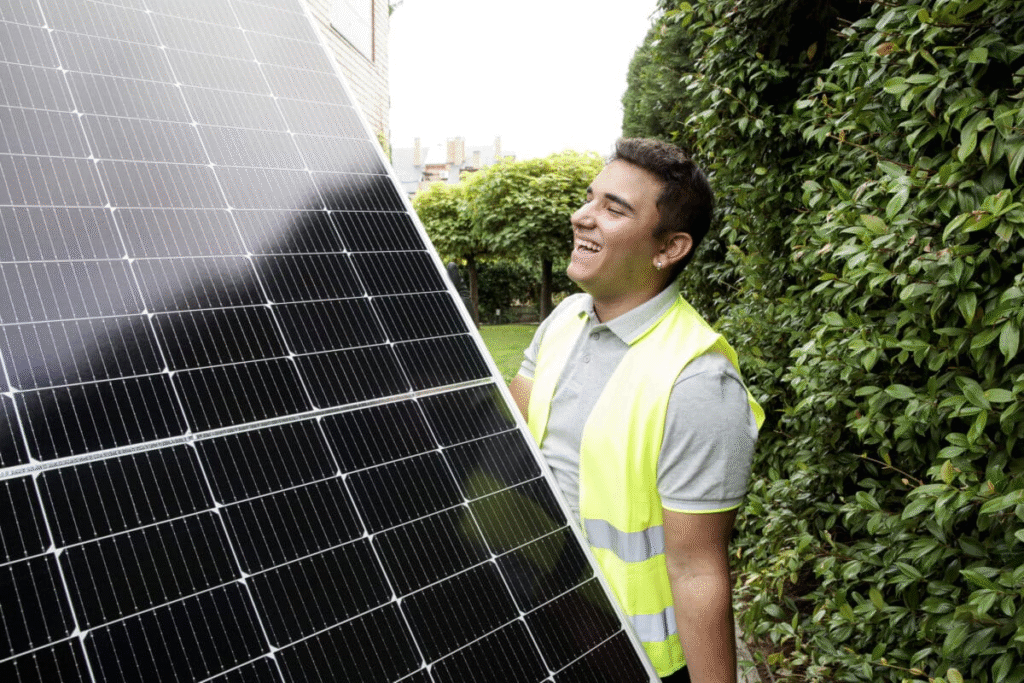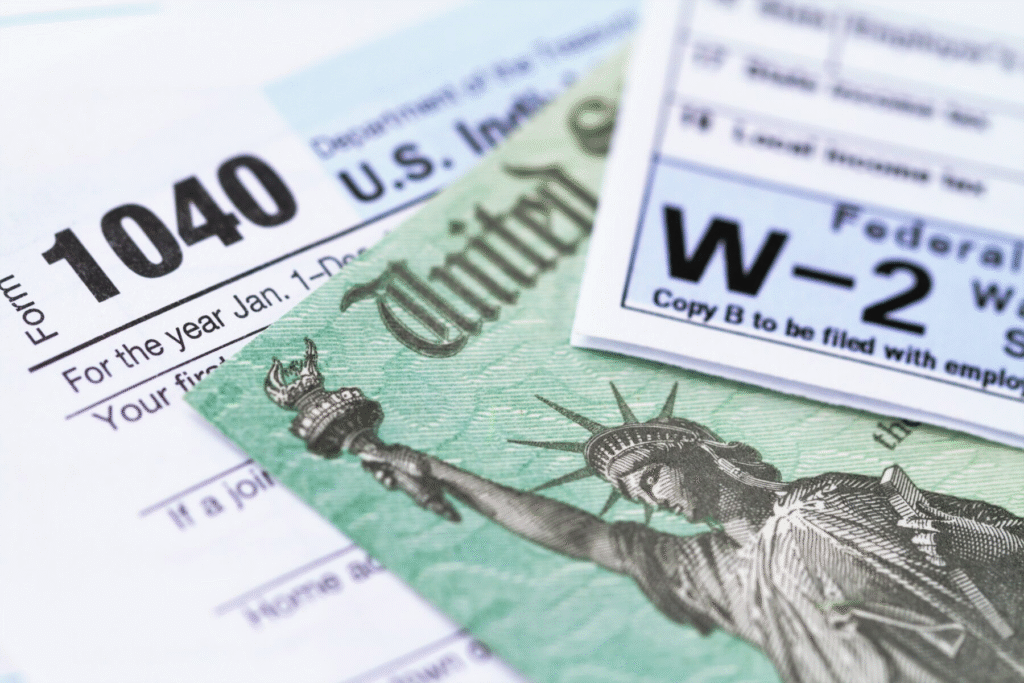
Living on the Big Island comes with some of the highest electricity costs in the nation, which is exactly why solar makes so much sense for local homeowners. By generating your own power, you’re not only protecting yourself from rising HELCO rates but also taking advantage of one of the sunniest climates in the world.
In this guide, we’ll break down the average cost of residential solar panels on the Big Island in 2025, what factors affect pricing, how incentives can lower your upfront costs, and how much you can expect to save over time. Contact BlueSky Energy Hawaii today for a free consultation and a custom quote designed just for your property.
What is the Average Cost of Residential Solar Panels on the Big Island in 2025?
For Big Island homeowners in 2025, the average solar panel installation typically ranges from $13,000 to $30,000+ before incentives. The final cost depends on several factors, including your system size, roof type, and whether you choose to add a solar battery for backup.
The good news? With the 30% federal solar tax credit and Hawai‘i-specific rebates, most families see a big reduction in their upfront investment. In many cases, solar ends up costing less than expected — while delivering major savings on HELCO bills for decades to come.
Here’s a simple breakdown of what you can expect to pay based on system size:
| System Size | Average Cost per Watt (2025) | Average Total Cost (Before Credits) | Estimated Cost After 30% Federal Credit |
| 4–6 kW (Small) | $3.50 – $3.80 | $13,000 – $19,000 | $9,028 – $13,543 |
| 7–10 kW (Medium) | $3.20 – $3.60 | $22,000 – $32,000 | $15,800 – $22,571 |
| 8–10+ kW (Large) | $3.00 – $3.40 | $25,000 – $32,000+ | $18,057 – $22,571+ |
For many Big Island households, that means going solar is more affordable than ever — especially when you factor in rising electricity prices and long-term energy independence.
What Affects the Cost of Residential Solar on the Big Island?
Not every solar project has the same price tag. The total cost depends on your home’s energy needs, property features, and the options you choose for your system. Here are the key factors we consider when designing a solar setup for Big Island families:
1. Solar System Size
Your energy use is the biggest driver of system size. The more electricity your household consumes, the more panels you’ll need. While larger systems cost more upfront, they also reduce or even eliminate your HELCO bill — meaning bigger long-term savings and faster payback.
2. Roof Type & Condition
Some roofs make solar simple, while others require more work. Asphalt shingles and standing-seam metal roofs are the easiest and most cost-effective for installation. Tile or older roofs may need extra preparation or repairs before panels are mounted, which can raise overall costs.
3. Battery Storage
Many Hawai‘i homeowners add solar batteries to protect against outages and make the most of their solar power. A battery lets you store excess energy during the day and use it at night or during grid disruptions. However, this peace of mind comes with an added cost — typically $8,000–$15,000 per battery.
4. Permitting & Local Conditions
Solar in Hawai‘i isn’t one-size-fits-all. Local building codes, permitting requirements, and even salt air near the coast can affect design and pricing. Choosing a trusted local installer like BlueSky Energy Hawaii means your system is designed for the island’s conditions and fully compliant with regulations — saving you headaches and delays.
How Much Can You Save With Solar?
The upfront investment may feel overwhelming at first, but solar is one of the smartest financial moves Big Island homeowners can make. Thanks to some of the highest electricity rates in the country — averaging $0.40+ per kWh in 2025 — every unit of power your system generates is immediate savings on your HELCO bill.
Most homeowners see their system pay for itself within 5–7 years. After that, your panels keep producing clean energy essentially for free, while utility costs continue to rise. That’s why solar is often called a “self-funding” investment.
Over the 25+ year lifespan of a solar system, the average Big Island family can save $50,000 to $100,000 or more, depending on energy usage and system size. Larger systems — especially when paired with battery storage — can push savings even higher.

Hawaii Incentives Available in 2025
Going solar on the Big Island is more affordable than ever, thanks to strong financial incentives designed to lower upfront costs and boost long-term savings. Here are the key programs homeowners can take advantage of in 2025:
Homeowners can claim 30% of the total system cost — including solar panels, inverters, and batteries — as a credit on their federal taxes. For most families, this adds up to thousands of dollars in savings right away.
Local rebate programs and state-backed initiatives vary by utility, but they can provide additional savings on top of the federal credit. These incentives often target battery storage, helping families add backup power more affordably.
- Net Energy Metering Alternatives
Although traditional Net Energy Metering (NEM) is no longer available, Hawai‘i homeowners still benefit from credit programs that reward them for sending excess solar back to the grid. These credits help offset your HELCO bill and reduce overall costs.
Together, these incentives can dramatically shorten your payback period — making solar not just environmentally smart, but also financially compelling for Big Island homeowners.
Solar Savings Start Here: Why Work With BlueSky Energy Hawaii?
At BlueSky Energy Hawaii, we’ve designed and installed more than 450 solar systems on the Big Island since 2014. We know what it takes to build systems that stand up to Hawai‘i’s sun, salt air, and unique permitting requirements, while delivering the savings homeowners expect.
When you choose us, you can count on honest, local guidance without the sales pressure, custom system designs tailored to your roof and lifestyle, and full support from installation through long-term monitoring. With a trusted Big Island team by your side, going solar feels simple, stress-free, and rewarding.
Final Thoughts
The average cost of solar panels on the Big Island in 2025 ranges between $13,000 and $32,000 before incentives — but with tax credits and energy savings, the investment pays for itself quickly. Whether your goal is lowering your monthly HELCO bill, preparing for outages, or building a greener future, solar is one of the smartest moves you can make as a Big Island homeowner.
Ready to see what solar could cost for your home? Contact BlueSky Energy Hawaii today for a free, no-pressure consultation and a custom quote designed just for your property.
FAQs
How much do residential solar panels cost on the Big Island in 2025?
Most homeowners can expect to pay between $13,000 and $32,000 before incentives. The final cost depends on system size, roof type, and whether you add battery storage. After applying the 30% federal tax credit and Hawai‘i incentives, the net price is often much lower.
How long does it take to pay off solar panels?
On the Big Island, the average payback period is 5–7 years, thanks to high electricity rates (over $0.40 per kWh). After that, most of the energy your panels produce is pure savings.
Will solar panels increase my home’s value?
Yes. Homes with solar are more attractive to buyers because they come with lower utility bills and long-term energy independence. On the Big Island, buyers often view solar as a smart investment rather than just an upgrade.
What incentives are available in 2025?
Homeowners can claim the 30% Federal Solar Tax Credit, plus Hawai‘i may offer rebates and export credit programs. These incentives make solar more affordable and reduce the payback time.




Recent Comments